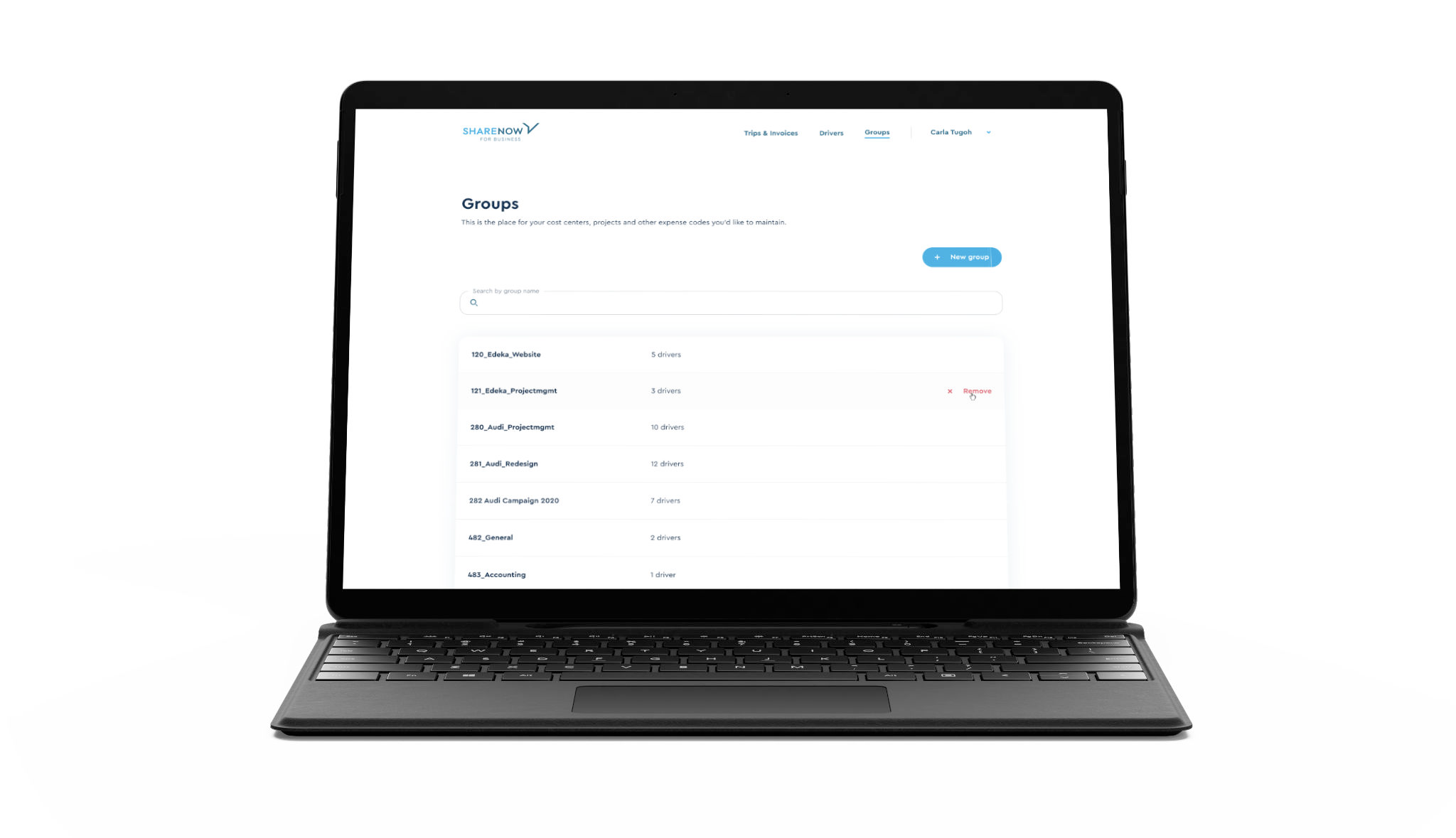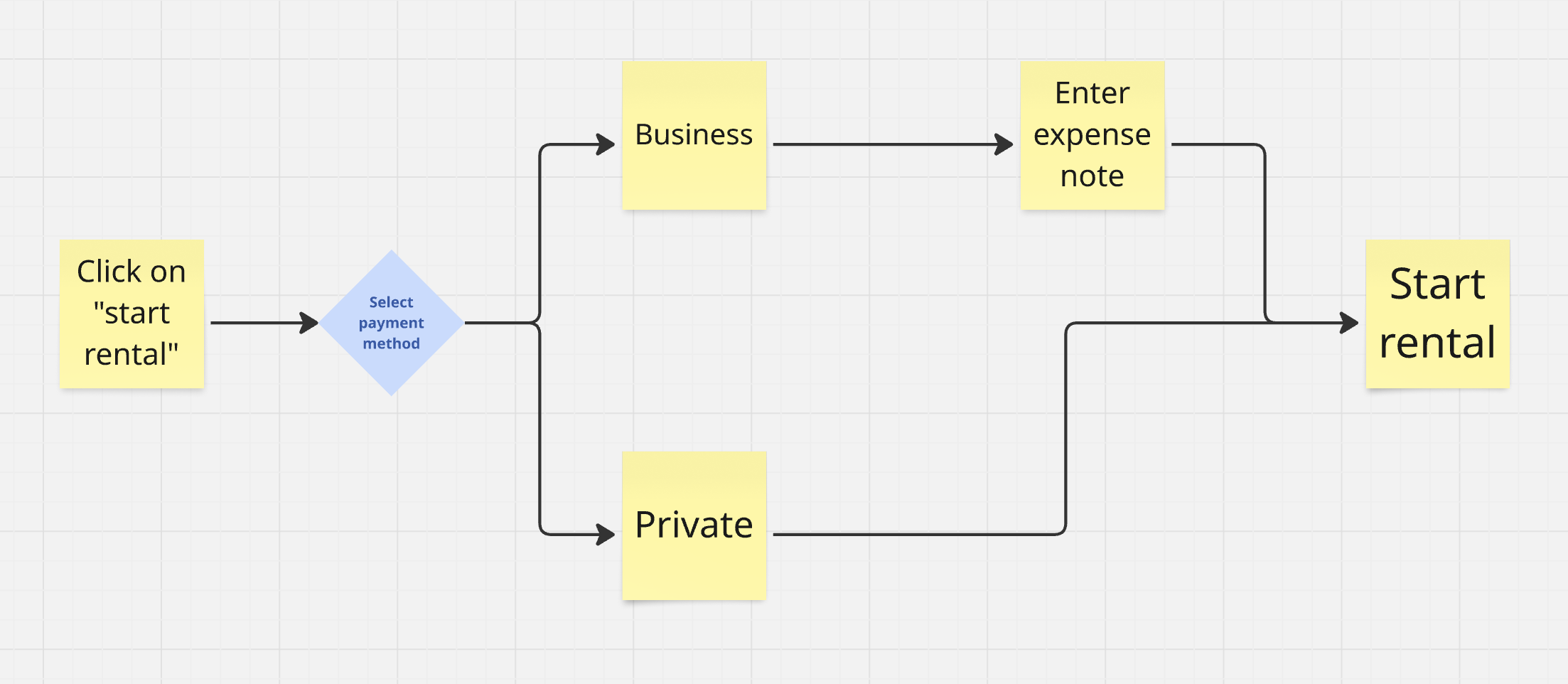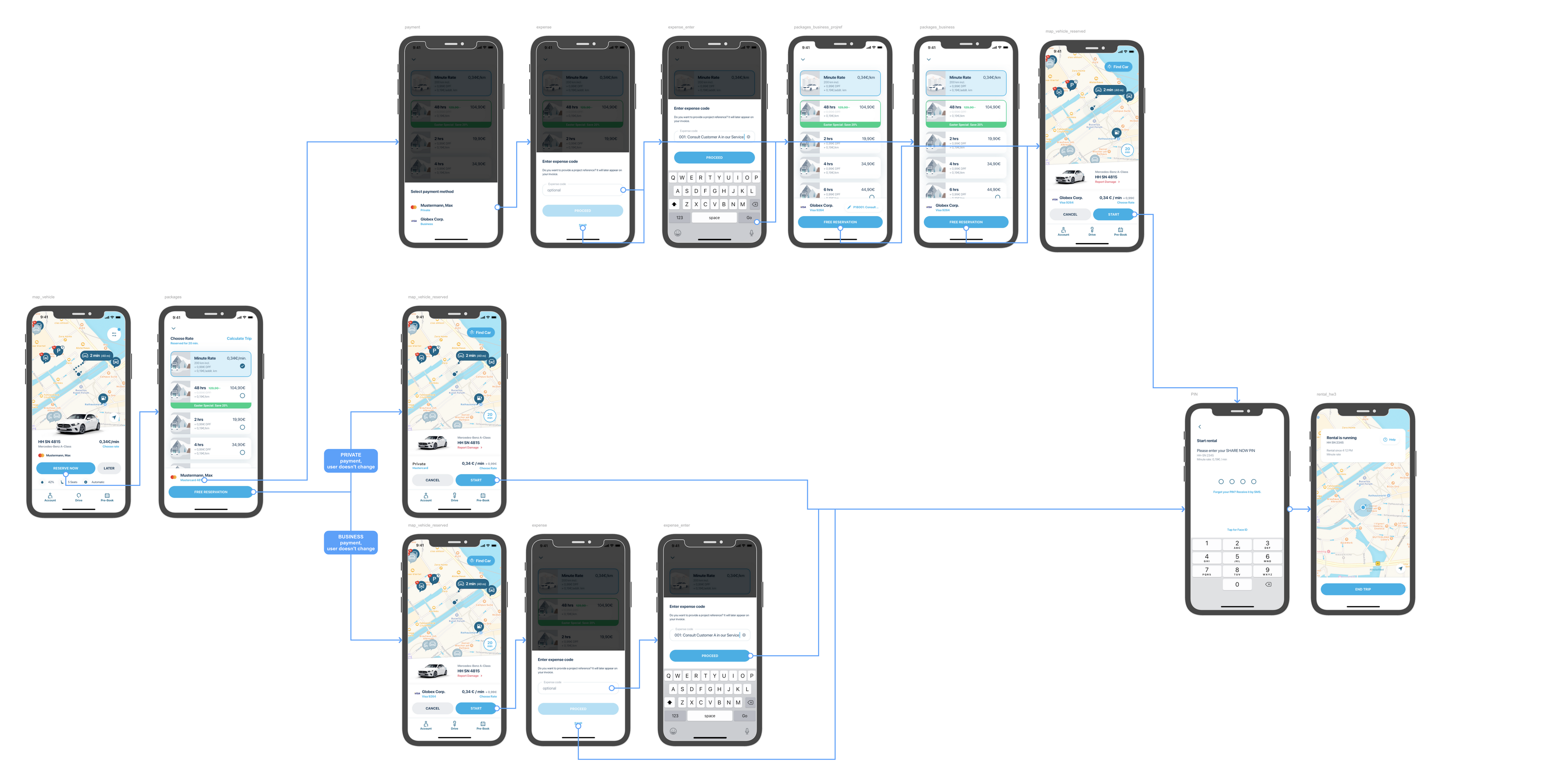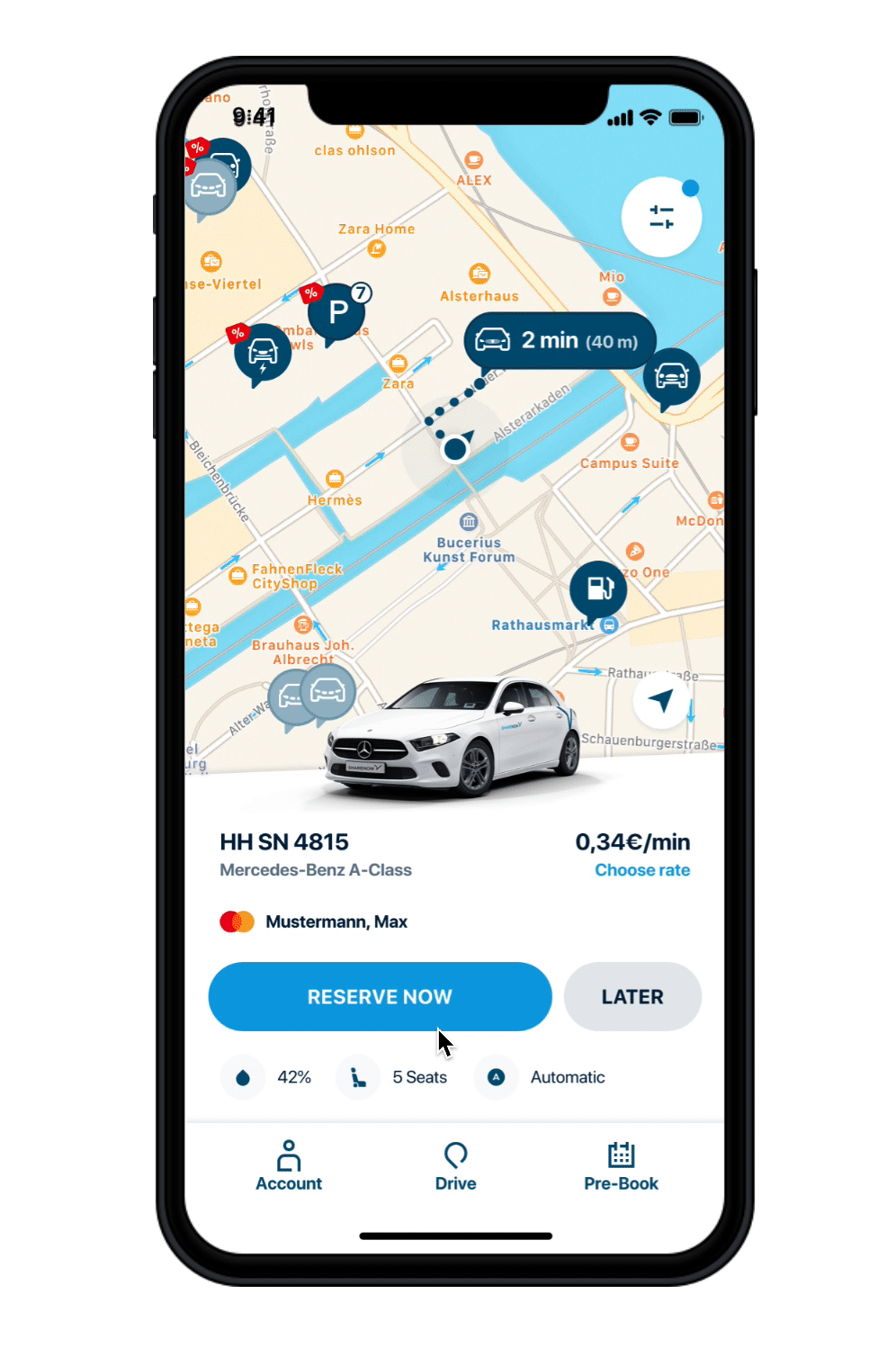Problem statement
As larger companies started using our platform, it became clear that our existing setup couldn’t support their internal processes, especially around bookkeeping and invoice management. Without features like assigning drivers to projects or cost centers, or adding custom invoice references, we would cause the finance departments more overhead. As we would make money per driver, this heavily limited upsell potential with existing clients. It also made our product less attractive to new leads with more structured internal needs.
Discovery
For starters, we talked to a couple of existing customers that we knew were struggling. Through this, we were able to identify some key jobs to be done:
As an accountant, I want to see the correct cost center on the invoice, so I know what team to assign it to.
As a driver, I want to be able to enter an expense note, so I can file my travel expenses for reimbursement.
As a driver, I want a way to have my expense note suggested to me in case I don't know it by heart or forgot it, so I don't have to struggle with accounting later.
As a travel manager, I want to be able to group my drivers into pre-defined cost centers or projects, so there won't be any miscommunication or manual effort for the drivers.
Another key learning was that we could split our customer base into three segments:
- Larger corporations, where every employee is assigned to one cost center only
- Agencies and consultancies, where the same driver can be part of multiple projects
- Freelancers, who would often invoice the trip costs at a later stage.

Concept: Flexible Grouping
To tackle the issue, we looked for a universal solution that would fit various corporate accounting structures. We realized that whether it’s cost centers or project codes, both boil down to grouping people under a shared accounting label. So we developed a concept allowing travel managers to create custom driver groups on the company account. We believed that this would be flexible enough to reflect any internal structure, with the option to assign drivers to one or multiple groups.
Research with account managers and customers, along with competitor analysis of Uber, confirmed we were on the right track. Usability tests with accountants and travel managers showed the concept was clear and adaptable. The only hiccup was that some users initially searched for the feature under "Drivers" instead of "Groups," but everyone eventually found the correct tab without assistance. This gave us enough confidence to go ahead.

Delivery
Having successfully tested the prototype, we first took care of improving the existing solution. We now forced all drivers, who were on a company account or did a business trip, to choose their payment method when starting the rental. If they selected their company payment method, we would additionally prompt them to enter an expense note. This was important because especially in Germany, changing invoices retroactively is hard, if not impossible. We could see a massive 80% uplift in trips with an expense note.
↗️ 10 – 20% more business trips
📈 ~80% uplift in business trips with an expense note
↘️ Less customer support effort needed to from private to business trips afterwards



At the same time, we would start building the skeleton for the B2B app where the creating and managing of groups would happen. The goal was that the driver would see his assigned cost centers or projects in the app, without having to manually create a payment method. However, we could never finish the project, as we had some external dependencies whose main focus was on the B2C product. Hence our work never got prioritized and I had left the team before seeing how this would end.